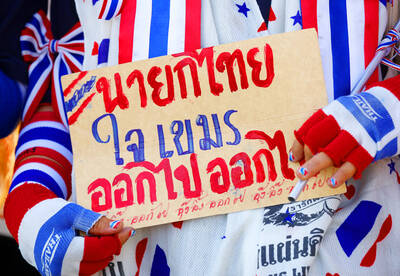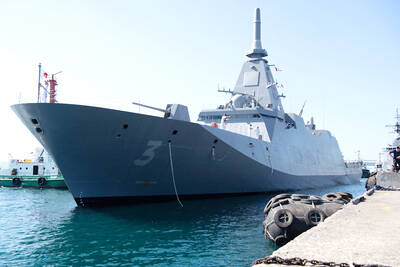The Vatican will review security procedures after a woman jumped a barrier and rushed at Pope Benedict XVI for the second time in two years, this time managing to knock him down before being pulled away by guards, the Vatican spokesman said.
Benedict, 82, wasn’t hurt and delivered his traditional Christmas Day greetings in 65 languages from the loggia overlooking St Peter’s Square. While a bit unsteady at first, he also delivered a short speech about the world’s trouble spots without problem.
The incident in St Peter’s Basilica raised fresh questions about security for the pontiff, however, after officials said the woman involved had jumped the barrier at the Midnight Mass last year in a failed bid to get to the pope. She even wore the same red-hooded sweat shirt.
In Rome, Italian officials also remarked on the odd similarity of the breach at the Vatican to an assault two weeks ago on Prime Minister Silvio Berlusconi by a man with a history of psychological problems.
The attack in Milan broke the prime minister’s nose and two teeth.
The Vatican identified the woman involved in Thursday night’s incident as Susanna Maiolo, 25, a Swiss-Italian national with psychiatric problems who was immediately taken to a clinic for treatment. Interior Ministry officials said she lived in Switzerland and the ANSA news agency said she had traveled to Rome specifically for the Mass as she did last year.
In last year’s case, Maiolo never managed to reach the pope and was quietly tackled by security. During Thursday night’s service, she launched herself over the barricade as Benedict walked down the aisle at the start of Christmas Eve service. As security guards wrestled her to the ground, she grabbed onto Benedict’s vestments, bringing him down with her.
Virtually anyone can get into a papal Mass: tickets are required but are easy to get if requested in advance. Identification cards are not necessary to gain entrance, although visitors must pass through a metal detector.
The Reverend Federico Lombardi said it’s not realistic to think the Vatican can ensure 100 percent security for the pope considering he is regularly surrounded by tens of thousands of people for his weekly audiences, Masses, papal greetings and other events.
“It seems that they intervened at the earliest possible moment in a situation in which ‘zero risk’ cannot be achieved,” he said on Friday.
The Vatican’s security officials will nonetheless review the episode and “try to learn from experience,” Lombardi said.
It was the first time a potential attacker has come into direct contact with Benedict during his nearly five-year papacy. Security analysts have frequently warned the pope is too exposed in his public appearances, but Lombardi noted that they are a necessary part of the job.
“People want to see him up close and he’s pleased to see them closely too,” Lombardi said. “A zero risk doesn’t seem realistic in a situation in which there’s a direct rapport with the people.”
While Benedict was unhurt in the fall, a retired Vatican diplomat, French Cardinal Roger Etchegaray, 87, fell and fractured his hip in the commotion. He will be operated on in the coming days at Rome’s Gemelli hospital, said Nicola Cerbino, a hospital spokesman.

Eleven people, including a former minister, were arrested in Serbia on Friday over a train station disaster in which 16 people died. The concrete canopy of the newly renovated station in the northern city of Novi Sad collapsed on Nov. 1, 2024 in a disaster widely blamed on corruption and poor oversight. It sparked a wave of student-led protests and led to the resignation of then-Serbian prime minister Milos Vucevic and the fall of his government. The public prosecutor’s office in Novi Sad opened an investigation into the accident and deaths. In February, the public prosecutor’s office for organized crime opened another probe into

RISING RACISM: A Japanese group called on China to assure safety in the country, while the Chinese embassy in Tokyo urged action against a ‘surge in xenophobia’ A Japanese woman living in China was attacked and injured by a man in a subway station in Suzhou, China, Japanese media said, hours after two Chinese men were seriously injured in violence in Tokyo. The attacks on Thursday raised concern about xenophobic sentiment in China and Japan that have been blamed for assaults in both countries. It was the third attack involving Japanese living in China since last year. In the two previous cases in China, Chinese authorities have insisted they were isolated incidents. Japanese broadcaster NHK did not identify the woman injured in Suzhou by name, but, citing the Japanese

YELLOW SHIRTS: Many protesters were associated with pro-royalist groups that had previously supported the ouster of Paetongtarn’s father, Thaksin, in 2006 Protesters rallied on Saturday in the Thai capital to demand the resignation of court-suspended Thai Prime Minister Paetongtarn Shinawatra and in support of the armed forces following a violent border dispute with Cambodia that killed more than three dozen people and displaced more than 260,000. Gathered at Bangkok’s Victory Monument despite soaring temperatures, many sang patriotic songs and listened to speeches denouncing Paetongtarn and her father, former Thai prime minister Thaksin Shinawatra, and voiced their backing of the country’s army, which has always retained substantial power in the Southeast Asian country. Police said there were about 2,000 protesters by mid-afternoon, although

MOGAMI-CLASS FRIGATES: The deal is a ‘big step toward elevating national security cooperation with Australia, which is our special strategic partner,’ a Japanese official said Australia is to upgrade its navy with 11 Mogami-class frigates built by Japan’s Mitsubishi Heavy Industries, Australian Minister for Defence Richard Marles said yesterday. Billed as Japan’s biggest defense export deal since World War II, Australia is to pay US$6 billion over the next 10 years to acquire the fleet of stealth frigates. Australia is in the midst of a major military restructure, bolstering its navy with long-range firepower in an effort to deter China. It is striving to expand its fleet of major warships from 11 to 26 over the next decade. “This is clearly the biggest defense-industry agreement that has ever